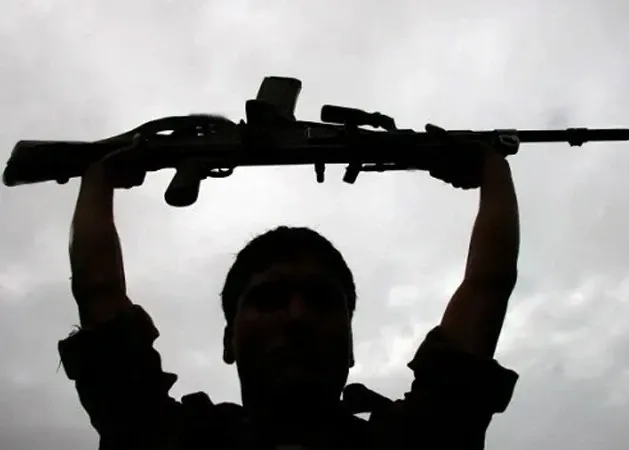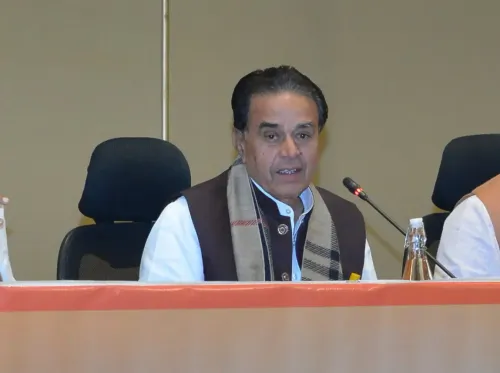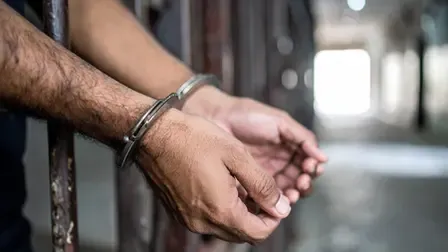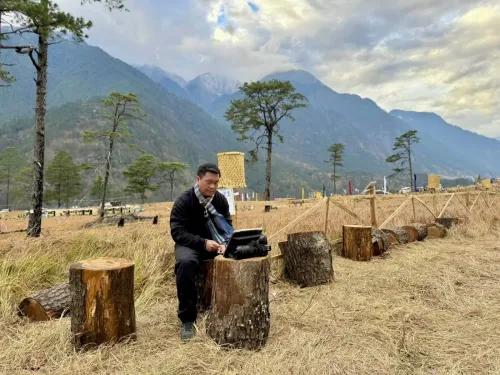What Sparked the Surrender of 23 Hardcore Maoists in Sukma?

Synopsis
Key Takeaways
- 23 Maoists surrendered in Sukma, indicating a shift in the insurgency landscape.
- The combined reward for the surrendered individuals was Rs 1.18 crore.
- Intensified anti-Naxal operations are resulting in increased defections.
- The state's rehabilitation policy is crucial in encouraging surrenders.
- Over 1,476 Maoists have surrendered under the current government.
Raipur, July 12 (NationPress) In a significant advancement in Chhattisgarh's anti-Naxal efforts, 23 Maoists, with a cumulative reward of Rs 1.18 crore, surrendered to senior police officials and the Central Reserve Police Force (CRPF) in Sukma district on Saturday.
The surrendered individuals had a total bounty of Rs 1.18 crore, including 11 prominent figures within the Maoist framework.
Among those who surrendered was Podiam Bhima, also known as Lokesh, a divisional committee member implicated in the 2012 kidnapping of Sukma's inaugural collector, Alex Paul Menon.
This surrender signifies a major setback for the Maoist influence in Bastar, as intensified military actions have resulted in notable encounters and a surge in defections.
Chhattisgarh's Chief Minister Vishnu Deo Sai commented on his social media platform, asserting that Bastar is undergoing a remarkable transformation.
The sounds of conflict are diminishing, replaced by the resonant tones of democracy throughout the region, he stated.
On that day, a total of 23 Naxalites with a collective bounty of Rs 1 crore 18 lakh surrendered in Sukma district.
Including previous surrenders in Narayanpur, a total of 45 insurgents have renounced violence and embraced democratic progress within the last 24 hours. These occurrences are more than mere symbols; they indicate an increasing belief in the government's initiatives to reach even the most isolated regions through inclusive development programs like Niyyad Nella Nar.
The statistics are telling. In the last 15 months, 1,521 Naxalites have laid down their arms, showcasing a shift in perspectives motivated by aspirations for peace and prosperity. This wave of transformation is also propelled by the state's revised 2025 surrender and rehabilitation framework, which has provided former insurgents with pathways to reintegration through education, housing, and employment opportunities.
These achievements resonate with the broader objective of creating a Naxalism-free Chhattisgarh under the guidance of Prime Minister Narendra Modi and the strategic leadership of Union Home Minister Amit Shah.
Through focused governance and community-oriented projects, the state is moving towards a future characterized not by strife but by unity, growth, and evolution.
Hardcore Naxalite DVCM Lokesh (Podiam Bhima) had a reward of Rs 8 lakh on his head. He also led the South Sub-Zonal Bureau team and was involved in the 2012 collector kidnapping, the Burkapal attack in 2017, and the Tekalguda encounter in 2021, which resulted in the deaths of 46 soldiers. He has also been implicated in other fatal incidents against security personnel.
Among the surrendered Maoists was Ramesh alias Kamalu, the security guard of CCM and Maoist Madvi Hidma, who has a bounty of Rs 1 crore.
Madvi Joga serves as the guard for BNPC Raje alias Rajakka, while Nuppo Lachu protects the SZCM (State Zonal Committee Member) Sannu Dada.
Law enforcement officials believe that these individuals, having worked closely with larger factions, may provide critical insights into the Maoist organization.
This group comprised one DVCM, six People's Party Committee Members, four Area Committee Members, and 12 lower-ranking party members, with rewards varying from Rs 8 lakh to Rs 1 lakh, reflecting their different levels of involvement in insurgent activities.
According to police sources, many of the surrendered members were active within the People's Liberation Guerrilla Army (PLGA) battalion number 1, recognized as the most robust military unit of the Maoists. Their choice to abandon arms was reportedly influenced by disillusionment with Maoist principles, internal disputes, and the violence inflicted upon tribal communities.
The state's updated surrender and rehabilitation policy, alongside development initiatives like the Niyad Nellnar scheme, have been instrumental in fostering such transitions.
The Maoists surrendered in the presence of CRPF DIGs (deputy inspector general) Anand Singh Rajpurohit and Syed Mohammad Habib Asgar, as well as Sukma SP Kiran Chavan. Each surrendered cadre received an immediate assistance of Rs 50,000 and will be rehabilitated under the government’s policy, which encompasses housing, education, and vocational training.
Among those who laid down their arms were Ramesh alias Kalmu Kesa, Kavasi Masa, Praveen alias Sanjeev alias Madkam Hunga, Nuppo Gangi, and Punem Deve, each identified as PPCMs or Platoon Company Commanders.
Additional members from the party, including Parski Pandey and Madvi Joga from the PLGA, also surrendered, both carrying the same rewards. The list further included Nuppo Lachhu alias Laxman, recognized as the guard of the PLGA Battalion Headquarters under SZCM Sannu Dada, and Podiyam Sukhram, a member of the PLGA Battalion No. 1. Another notable figure, Dudhi Bhima, served as a deputy commander of Platoon 4. Four ACMs, or Area Committee Members, including Muchaki Ranauti alias Hidme, Kalmu Dula, Dudhi Mangali, and Siddharth alias Madvi Inda, each had a bounty of Rs 5 lakh, highlighting their strategic involvement in Naxal operations.
The surrender also encompassed lower-ranking party members such as Hemla Rama (with a bounty of Rs 3 lakh) and seven others - Sodi Hidme, Kawasi Joga, Rupa alias Bhime, Gagan alias Kartam Dudwa, Kawasi Hungi, Karam Bhima, and Madkam Nande - each with a Rs 1 lakh reward. This collective defection conveys a clear message of dissent within the insurgent ranks.
Disillusionment with the ideology, internal conflicts, and the expanding reach of state rehabilitation programs have compelled even the most entrenched Maoist cadres to opt for reintegration.
This development follows the surrender of 22 Maoists in Narayanpur district just the day before, culminating in over 1,476 Maoists having laid down their arms under the current government.
Officials believe these consecutive surrenders signal a weakening of the Maoist network in Bastar and a move towards peace and reintegration.










